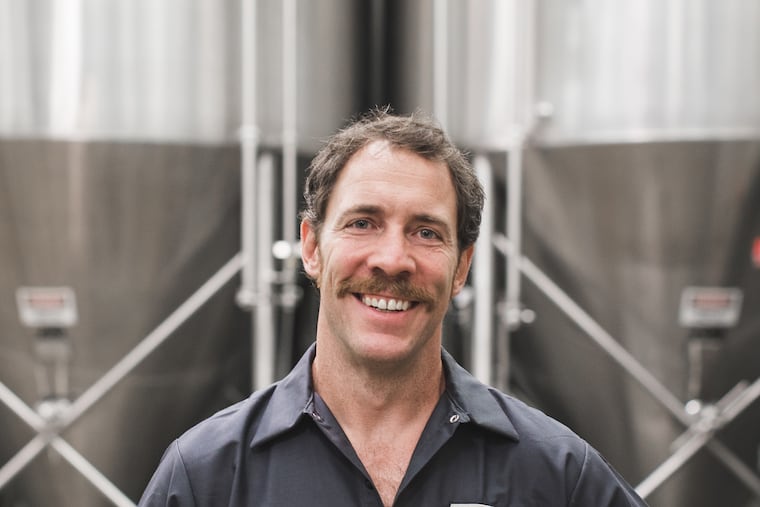Fruit beers tapping into the Philly market in a big way
Once a tiny niche in a U.S. beer market that now generates more than $120 billion annually, the many varieties of fruit-flavored beers comprise one of the industry’s fastest growing segments.

If you’re wondering why the labels and ingredient lists on so many beers suddenly include mango, grapefruit, cherries, and raspberries, you might want to thank a young adult at your local Starbucks.
According to some beer experts, the same Gen Yers who prefer frothy, sweet caffeinated drinks like frappuccinos to black coffee are also choosing beers laced with fruits over more traditional pilsners and lagers.
“We’re in a phase now that I call the soft drink-ification of beer and I think it’s generational,” said Tim Yarrington, an instructor in the brewing program at Williamsport’s Penn College of Technology. ”One of the defining characteristics of beer has always been bitterness. But these kids have grown up on soda and sweet cereals. They’re bitter-averse.”
”The beer-drinking community has tended to be older white male,” said Alison Feeney, a Shippensburg University professor who has written a book on Pennsylvania’s brewing history. “But there’s definitely data that shows the younger generation is far more eager to try something and this is a demographic that’s going for the sweeter, fruitier flavors.”
Once a tiny niche in a U.S. beer market that now generates more than $120 billion annually, the many varieties of fruit-flavored beers comprise one of the industry’s fastest growing segments. Traditional sour beers have been joined by those fermented with fruit, those infused with juices and purees, those that derive their fruity taste from special hops blends.
“The consumers are always looking for new flavors, new variances,” said Trevor Prichett, CEO of Philadelphia’s Yards Brewing Co. “Adding fruits and fruit flavors is one direction brewers have gone in, particularly with the IPA, pale ale, and wheat styles. When this trend got started, the wheats were the ones where you really saw lots of fruit being incorporated.”
One of the progenitors of this movement, said Prichett, was Ballast Point, a San Diego brewing company started in 1996 whose best-selling products, including Grapefruit Sculpin and Watermelon Dorado, are sold in the Philadelphia area.
While European brewers have been making shandies -- lemonade is added to the beer when it’s dispensed -- and the like for hundreds of years, he added, “here in the U.S., Ballast Point was one of the first to go for this in a really meaningful, commercial way.”
The popularity of these beers, many of which are seasonal since they depend on the availability of local fruit, has provided consumers who prefer fruity to bitter with more options than simply sticking a lime into the mouth of a Corona.
Hundreds of these products now fill the shelves of supermarket and distributors, their funky names meant to appeal to the younger beer drinker -- 21st Amendment Brewery’s Hell or High Pomegranate, Eagle Brewery’s Banana Bread Beer, and Springdale Beer’s Melange De Mures.
Here in Philadelphia, one of Yards’ most popular beers is Pynk, which is brewed with raspberries and sweet and sour cherries. Ads describe its flavor as possessing “a crisp, fruity zing.”
While this trend took off among small craft brewers, it’s now so superheated that the industry’s leaders have entered the market.
Anheuser-Busch produces a Bud Light Orange and a Bud Light Lemon Tea, aimed at those who prefer fewer calories and smaller beer bills. Two Hats, a new line of inexpensive light beers from MillerCoors, has flavors that include pineapple and lime. Even Pennsylvania-based Yuengling, which bills itself as the nation’s oldest brewer, is offering a Raging Eagle Mango.
“The bigger breweries are following the crafts these days,” said Yarrington. “But it’s not the first time this kind of thing has happened. Budweiser, after all, is a sweet-ified version of a classic European pilsner. If you put a Bud or a Miller against classic pilsner, the difference is striking.”
After World War II, as local breweries closed or were bought up, conglomerates like Miller and Anheuser-Busch took hold of the market.
In time and in response, microbrewing took hold in the 1970s and has since exploded. With more than 90 in the area, Philadelphia is a hub of craft breweries. Nationally, according to figures from the Colorado-based Brewers Association, the number of these boutique breweries has grown from 800 in 1995 to more than 6,000.
Max Bakker, a senior educator with Anheuser-Busch’s craft division, points to the legalization of home brewing in the 1980s as the point when fruit-infused beer began to creep into the market.
“The rule book was basically wide open, and people started looking at what they could add to their beers,” he said.
These smaller brewers, Bakker said, broadened both the variety of fruit tastes and the market for them. A 2018 Brewers Association poll found that 39% of craft-beer drinkers were more inclined to try fruit beers than they were a few years earlier
The fruit that jump-started this trend, Prichett said, is pumpkin. About seven or eight years ago, said Prichett, brewers took a cue from coffee houses and began infusing their products with pumpkin.
“And pumpkin’s really had some staying power,” Prichett said.
Despite this drift toward fruit, Yarrington, who teaches a course in brewing and fermentation at Penn Tech, said he wasn’t quite ready to make the switch from what he grew up drinking.
“As a more traditionally trained brewer and beer drinker, I struggle with it,” he said. “But beer has always been changing and innovating. At one point, pilsner was revolutionary.”